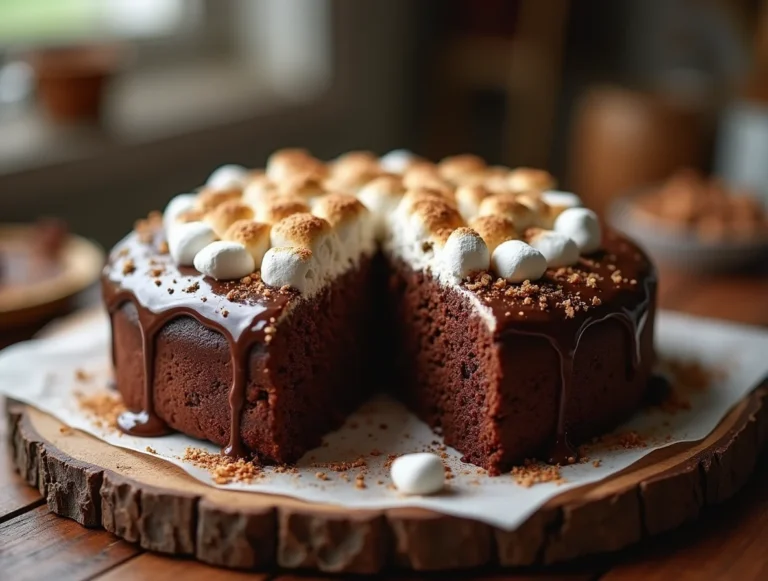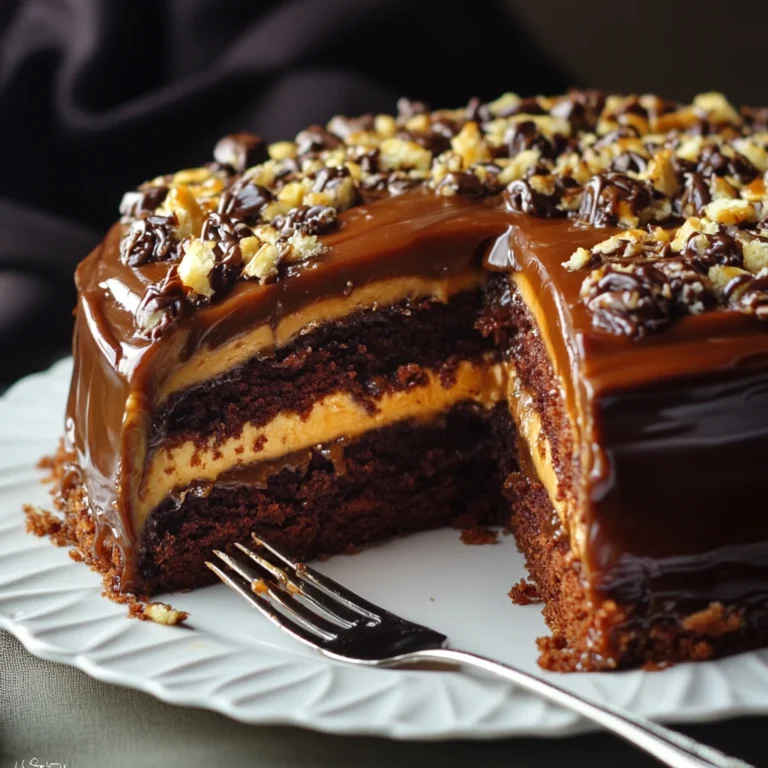Starbucks Copycat Lemon Loaf

Description: This recipe delivers a slice of sunshine with every bite! Our Starbucks-inspired Lemon Loaf is a perfectly moist, tender cake, infused with a bright and zesty lemon flavor. The crumb is delicate, the texture is satisfying, and the homemade lemon glaze adds the perfect touch of sweetness and tartness. Forget the coffee shop run – you can enjoy this classic treat anytime, right from your own kitchen.
Why you will love this recipe:
- Intense Lemon Flavor: We use a combination of fresh lemon zest, lemon juice, and a touch of lemon extract to ensure every bite is bursting with bright, citrusy goodness.
- Perfectly Moist Texture: Sour cream (or Greek yogurt) and vegetable oil work together to create a super moist and tender crumb that will have you coming back for seconds.
- Easy to Make: This recipe uses simple ingredients and straightforward instructions, making it a breeze to whip up, even for beginner bakers.
- Versatile: Enjoy it for breakfast with your morning coffee, as an afternoon snack, or as a light dessert. It’s perfect for any occasion!
- Crowd-Pleasing: The bright flavor and comforting texture of this lemon loaf make it a guaranteed hit with family and friends.
Introduction
The Starbucks Lemon Loaf has become a ubiquitous symbol of coffee shop indulgence. Its bright, tangy flavor and moist, dense texture make it an irresistible treat, perfectly complementing a warm cup of coffee or tea. But what if you could recreate this iconic loaf in your own kitchen, using fresh ingredients and a simple recipe? This copycat recipe aims to do just that, providing you with all the tips and tricks to achieve that signature Starbucks taste and texture.
We’ve carefully crafted this recipe to mimic the characteristics that make the original so beloved. The key lies in balancing the ingredients to achieve the perfect level of moisture, tanginess, and sweetness. Using fresh lemon zest and juice is essential for capturing that authentic lemon flavor, while the addition of sour cream or Greek yogurt adds a richness and tenderness to the crumb.
Whether you’re a seasoned baker or a complete novice, this recipe is designed to be accessible and straightforward. Follow the simple instructions, and you’ll be rewarded with a homemade Lemon Loaf that rivals (or even surpasses!) the original. Get ready to impress your friends and family with this delightful treat!
Ingredients:
For the Lemon Loaf:
- 1 1/2 cups all-purpose flour
- 1/2 tsp baking powder
- 1/2 tsp baking soda
- 1/4 tsp salt
- 3 large eggs
- 1 cup granulated sugar
- 1/2 cup sour cream or Greek yogurt
- 1/2 cup vegetable oil (canola, sunflower, or light olive oil)
- 2 tbsp unsalted butter, melted
- 2 tbsp lemon zest (from about 2 lemons)
- 1/4 cup fresh lemon juice
- 1 tsp vanilla extract
- 1/2 tsp lemon extract (optional, but enhances the lemon flavor)
For the Lemon Glaze:
- 1 cup powdered sugar
- 2–3 tbsp fresh lemon juice
- 1/2 tsp lemon zest (optional, for garnish)

Preparation:
Step 1: Prepare for Baking:
Preheat your oven to 350°F (175°C). This ensures even baking and prevents the loaf from becoming dry or undercooked. Grease a 9×5-inch loaf pan thoroughly with butter or cooking spray. Then, line the pan with parchment paper, leaving an overhang on the sides. This makes it incredibly easy to lift the loaf out of the pan once it’s cooled, preventing it from sticking and ensuring a clean release. The parchment paper also acts as a protective barrier, preventing the bottom and sides of the loaf from becoming overly browned.
Step 2: Mix the Dry Ingredients:
In a medium bowl, whisk together the all-purpose flour, baking powder, baking soda, and salt. Whisking is crucial for evenly distributing the leavening agents (baking powder and baking soda) throughout the flour. This ensures a uniform rise and a light, airy texture. Sifting the flour before measuring can also help to prevent lumps and create a more consistent batter. Set the dry ingredients aside for later use.
Step 3: Prepare the Wet Ingredients:
In a large mixing bowl, whisk together the eggs, granulated sugar, sour cream (or Greek yogurt), oil, and melted butter until smooth. The key here is to thoroughly combine the ingredients, ensuring that the sugar is completely dissolved. This helps to create a smooth and even batter. Using room temperature eggs can also improve the emulsion and result in a lighter, fluffier loaf. The melted butter adds richness and moisture to the cake.
Step 4: Infuse with Lemon Flavor:
To the wet ingredients, add the lemon zest, lemon juice, vanilla extract, and lemon extract (if using). The lemon zest is where most of the lemon flavor resides, so don’t skimp on it! Use a microplane zester to finely grate the zest, avoiding the bitter white pith. Fresh lemon juice adds a bright tanginess that perfectly complements the sweetness of the sugar. Vanilla extract enhances the overall flavor profile, while lemon extract intensifies the lemony notes.
Step 5: Combine the Mixtures:
Gradually add the dry ingredients to the wet ingredients, stirring gently until just combined. This is the most crucial step in preventing a tough or dense loaf. Overmixing develops the gluten in the flour, resulting in a chewy texture. Stir only until the dry ingredients are just moistened. A few streaks of flour are okay; they will disappear during baking.
Step 6: Bake the Loaf:
Pour the batter into the prepared loaf pan and smooth the top with a spatula. This ensures even baking and prevents the loaf from developing a lopsided appearance. Bake in the preheated oven for 45-50 minutes, or until a toothpick inserted into the center comes out clean. The baking time may vary depending on your oven, so it’s important to check for doneness using a toothpick. If the top of the loaf is browning too quickly, you can tent it with foil to prevent it from burning.
Step 7: Cool the Loaf:
Let the loaf cool in the pan for 10 minutes before attempting to remove it. This allows the cake to firm up slightly, making it less likely to break or crumble. After 10 minutes, carefully lift the loaf out of the pan using the parchment paper overhang and transfer it to a wire rack to cool completely. Allow the loaf to cool completely before glazing.
Step 8: Make the Lemon Glaze:
In a small bowl, whisk together the powdered sugar and 2-3 tablespoons of fresh lemon juice until smooth. Start with 2 tablespoons and add more lemon juice as needed to achieve the desired consistency. The glaze should be thick enough to cling to the loaf but thin enough to drizzle easily. If you want to add an extra touch of lemon flavor, you can also incorporate 1/2 teaspoon of lemon zest into the glaze.
Step 9: Glaze and Serve:
Once the loaf is completely cool, drizzle the lemon glaze evenly over the top. Garnish with lemon zest, if desired, for a pop of color and added lemon aroma. Let the glaze set for a few minutes before slicing and serving. The glaze will harden slightly as it sits, creating a beautiful and delicious finishing touch.
COOKING Rating:
Easy
Serving Suggestions:
- Serve a slice with your morning coffee or tea.
- Enjoy as an afternoon snack with a glass of milk.
- Pair with a scoop of vanilla ice cream or a dollop of whipped cream for a light dessert.
- Offer it as part of a brunch spread.
- Gift a loaf to a friend or neighbor.
Tips:
- Use room temperature ingredients for a smoother batter and better rise.
- Don’t overmix the batter! Overmixing develops the gluten in the flour, resulting in a tough loaf.
- Line your loaf pan with parchment paper for easy removal and cleanup.
- Adjust the amount of lemon juice in the glaze to achieve your desired consistency.
- Store the loaf in an airtight container at room temperature for up to 3 days or in the refrigerator for up to 1 week.
Prep Time:
15 minutes
Cook Time:
50 minutes
Total Time:
1 hour 5 minutes
Nutritional Information:
(Note: Nutritional information is an estimate and may vary based on specific ingredients and portion sizes.)
- Calories: 350 per slice (approximate)
- Protein: 4g per slice (approximate)
- Sodium: 150mg per slice (approximate)
Conclusion
Congratulations! You’ve successfully created a delicious Starbucks Copycat Lemon Loaf. The bright, tangy flavor and moist, tender texture are sure to impress. This recipe is a testament to the fact that you don’t need to be a professional baker to create something truly special in your own kitchen. Enjoy the fruits (or lemons!) of your labor and share the joy with those around you. Happy baking!
Questions and Answers:
Q1: Can I use margarine instead of butter?
A: While margarine can be used as a substitute for butter, it will alter the flavor and texture of the loaf. Butter provides a richer flavor and a more tender crumb. If you must use margarine, choose a high-quality variety with a high fat content.
Q2: Can I freeze the lemon loaf?
A: Yes! Lemon loaf freezes very well. Allow the loaf to cool completely, then wrap it tightly in plastic wrap followed by a layer of foil. You can also freeze individual slices for easy snacking. Frozen lemon loaf will keep for up to 2-3 months. Thaw it overnight in the refrigerator before serving. It’s best to freeze BEFORE glazing for the best results.
Q3: I don’t have lemon extract. Is it necessary?
A: Lemon extract is not strictly necessary, but it significantly enhances the lemon flavor, especially if your lemons aren’t super fragrant. If you don’t have it, you can substitute with an extra tablespoon of lemon zest for a little additional lemon boost!
Q4: My lemon loaf is browning too quickly on top. What can I do?
A: If your loaf is browning too quickly, you can tent it loosely with aluminum foil during the last 15-20 minutes of baking. This will shield the top of the loaf from direct heat and prevent it from burning.
Q5: Can I substitute all-purpose flour with gluten-free flour?
A: Yes, you can substitute all-purpose flour with a gluten-free all-purpose blend. However, keep in mind that gluten-free flours can behave differently than regular flour. You may need to add a binder like xanthan gum to help with the structure of the loaf. Follow the instructions on your gluten-free flour blend for best results. You may need to adjust the baking time as well.

Starbucks Copycat Lemon Loaf
Ingredients
- For the Lemon Loaf:
- 1 1/2 cups all-purpose flour
- 1/2 tsp baking powder
- 1/2 tsp baking soda
- 1/4 tsp salt
- 3 large eggs
- 1 cup granulated sugar
- 1/2 cup sour cream or Greek yogurt
- 1/2 cup vegetable oil canola, sunflower, or light olive oil
- 2 tbsp unsalted butter melted
- 2 tbsp lemon zest from about 2 lemons
- 1/4 cup fresh lemon juice
- 1 tsp vanilla extract
- 1/2 tsp lemon extract optional, but enhances the lemon flavor
- For the Lemon Glaze:
- 1 cup powdered sugar
- 2 –3 tbsp fresh lemon juice
- 1/2 tsp lemon zest optional, for garnish
Instructions
- Step 1: Prepare for Baking:
- Preheat your oven to 350°F (175°C). This ensures even baking and prevents the loaf from becoming dry or undercooked. Grease a 9×5-inch loaf pan thoroughly with butter or cooking spray. Then, line the pan with parchment paper, leaving an overhang on the sides. This makes it incredibly easy to lift the loaf out of the pan once it’s cooled, preventing it from sticking and ensuring a clean release. The parchment paper also acts as a protective barrier, preventing the bottom and sides of the loaf from becoming overly browned.
- Step 2: Mix the Dry Ingredients:
- In a medium bowl, whisk together the all-purpose flour, baking powder, baking soda, and salt. Whisking is crucial for evenly distributing the leavening agents (baking powder and baking soda) throughout the flour. This ensures a uniform rise and a light, airy texture. Sifting the flour before measuring can also help to prevent lumps and create a more consistent batter. Set the dry ingredients aside for later use.
- Step 3: Prepare the Wet Ingredients:
- In a large mixing bowl, whisk together the eggs, granulated sugar, sour cream (or Greek yogurt), oil, and melted butter until smooth. The key here is to thoroughly combine the ingredients, ensuring that the sugar is completely dissolved. This helps to create a smooth and even batter. Using room temperature eggs can also improve the emulsion and result in a lighter, fluffier loaf. The melted butter adds richness and moisture to the cake.
- Step 4: Infuse with Lemon Flavor:
- To the wet ingredients, add the lemon zest, lemon juice, vanilla extract, and lemon extract (if using). The lemon zest is where most of the lemon flavor resides, so don’t skimp on it! Use a microplane zester to finely grate the zest, avoiding the bitter white pith. Fresh lemon juice adds a bright tanginess that perfectly complements the sweetness of the sugar. Vanilla extract enhances the overall flavor profile, while lemon extract intensifies the lemony notes.
- Step 5: Combine the Mixtures:
- Gradually add the dry ingredients to the wet ingredients, stirring gently until just combined. This is the most crucial step in preventing a tough or dense loaf. Overmixing develops the gluten in the flour, resulting in a chewy texture. Stir only until the dry ingredients are just moistened. A few streaks of flour are okay; they will disappear during baking.
- Step 6: Bake the Loaf:
- Pour the batter into the prepared loaf pan and smooth the top with a spatula. This ensures even baking and prevents the loaf from developing a lopsided appearance. Bake in the preheated oven for 45-50 minutes, or until a toothpick inserted into the center comes out clean. The baking time may vary depending on your oven, so it’s important to check for doneness using a toothpick. If the top of the loaf is browning too quickly, you can tent it with foil to prevent it from burning.
- Step 7: Cool the Loaf:
- Let the loaf cool in the pan for 10 minutes before attempting to remove it. This allows the cake to firm up slightly, making it less likely to break or crumble. After 10 minutes, carefully lift the loaf out of the pan using the parchment paper overhang and transfer it to a wire rack to cool completely. Allow the loaf to cool completely before glazing.
- Step 8: Make the Lemon Glaze:
- In a small bowl, whisk together the powdered sugar and 2-3 tablespoons of fresh lemon juice until smooth. Start with 2 tablespoons and add more lemon juice as needed to achieve the desired consistency. The glaze should be thick enough to cling to the loaf but thin enough to drizzle easily. If you want to add an extra touch of lemon flavor, you can also incorporate 1/2 teaspoon of lemon zest into the glaze.
- Step 9: Glaze and Serve:
- Once the loaf is completely cool, drizzle the lemon glaze evenly over the top. Garnish with lemon zest, if desired, for a pop of color and added lemon aroma. Let the glaze set for a few minutes before slicing and serving. The glaze will harden slightly as it sits, creating a beautiful and delicious finishing touch.






